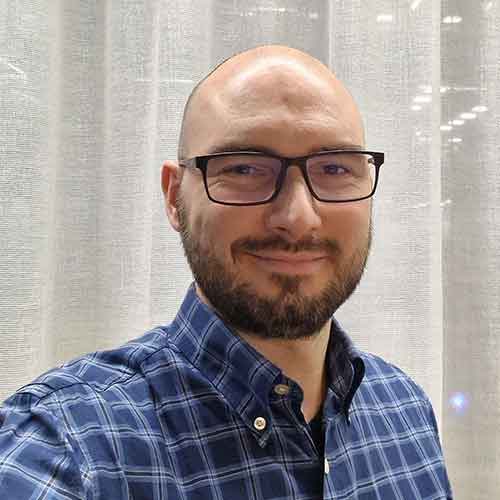-
Home
-
About Underhåll
- Conference
- Exhibitors
-
Plan your visit
-
For Exhibitors
-
The critical thinking behind Fortum’s success: “Don’t maintain everything!”
 A whole new approach to maintenance is behind this astonishing journey:
A whole new approach to maintenance is behind this astonishing journey:
– In a couple of years we have gone from firefighting to effective preventive maintenance, says Anders Sandberg, who is responsible for maintenance development and investments at Fortum Recycling & Waste.
At the Maintenance Strategy conference in March, he will explain how it was done.
Taking place on 12-15 March at the Swedish Exhibition & Congress Centre, Underhållsmässan 2024 will not only be the leading industrial maintenance fair of its kind in the Nordic region. An extensive stage programme and three parallel conferences are also taking place.
One of them is Underhållsstrategi – för stärkt konkurrenskraft [Maintenance for Competitive Advantage]. It takes place on 13 March, in partnership with the Swedish Maintenance Association. Anders Sandberg from Fortum will be one of the most exciting speakers.
– I want to show how we think and how we do things. Maybe it can inspire others, he says.
A journey towards prioritised goals
The maintenance initiative gained momentum in 2018, when energy giant Fortum launched the process of harmonising maintenance within the Recycling & Waste division in its drive for operational excellence.
– This is our goal, but it doesn’t mean we’re there yet. That said, the model has undoubtedly taken us a long way, Anders says.
He describes how maintenance work has gone from “running around in a hamster wheel while trying to put out fires” to modern, technically advanced preventive maintenance. In his seminar, he will describe the steps along the way:
– In particular, we have started to work more systematically. We measure things and do criticality analyses to see where our most critical points are.
Focus on what’s critical
To put it another way: the aim is not to stop everything from breaking.
– Some things can be left unmaintained, Anders says.
– By knowing what is most critical, we can focus on working on the right things, in the right places. If we over-maintain something that is less important, we risk missing the really critical things that can lead to a breakdown.
He gives a concrete example: it doesn’t matter if a ceiling light goes out, just replace it. But if the flue gas fan stops, the whole system stops.
– It’s not enough just to go there and look. We need to automate, put sensors in, so we can predict when the fan goes bad. We need to keep a close eye on it.
– And when we invest, we ask ourselves what we can do to improve such parts so that they last longer, and we don’t waste energy on them.
Saving millions of dollars
Fortum is the Nordic leader in hazardous waste management, with facilities in Sweden (Kumla), Denmark (Nyborg) and Finland (Riihimäki). The main task is to turn waste into new raw materials, recycling and incineration.
– As a by-product, our division produces electricity and heat. That makes us quite different from the rest of Fortum, which is very much about hydropower and nuclear power.
Since almost all companies have limited resources, Anders Sandberg stresses the importance of prioritising correctly to reduce costs, prevent downtime and increase availability.
– I would say we have made a lot of progress here. We’ve created a model, putting in place all the pieces of the puzzle that you need for good maintenance.
– As a result, the availability of our equipment, which was at times quite low, has now reached much better levels.
He does not want to give percentages, but there are significant improvements:
– Every available hour is worth a lot of money to us. Clearly, the model we have developed saves many millions every year.